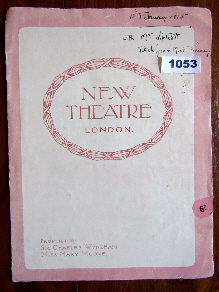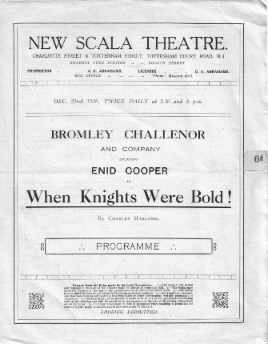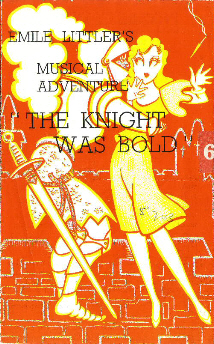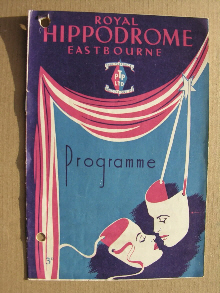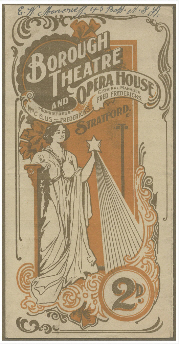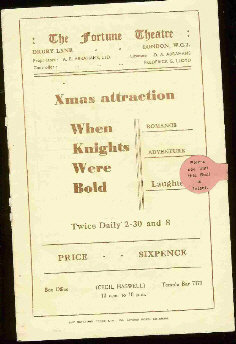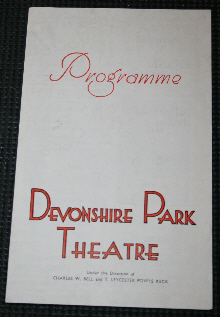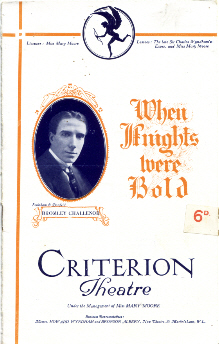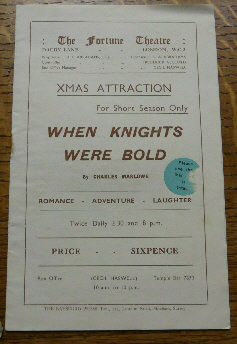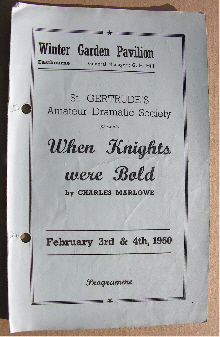|
Play List: 4. Corinne 7. The Mormons 9. Lucy Brandon 10. Storm-Beaten 11. Lady Clare 13. Bachelors 14. Constance 15. Lottie 16. Agnes 17. Alone in London 18. Sophia 19. Fascination 20. The Blue Bells of Scotland 21. Partners 24. Angelina! 25. The Old Home 26. A Man’s Shadow 27. Theodora 29. Clarissa 30. Miss Tomboy 32. Sweet Nancy 33. The English Rose 36. Marmion 37. The Gifted Lady 38. The Trumpet Call 39. Squire Kate 40. The White Rose 42. The Black Domino 44. The Charlatan 45. Dick Sheridan 47. Lady Gladys 48. The Strange Adventures of Miss Brown 49. The Romance of the Shopwalker 52. Two Little Maids from School ___ |
|
ROBERT WILLIAMS BUCHANAN (1841 - 1901) |
|
|
|
|
|
|
|
|
THEATRE REVIEWS 53. When Knights Were Bold (1906)
When Knights Were Bold As well as the London revivals, When Knights Were Bold also played regularly in the provinces (when Bromley Challenor made his first appearance in London as Sir Guy de Vere at the Kingsway Theatre in 1917, a report in The Stage mentioned his having played the role 1,500 times before) and when its popularity in London eventually faded it continued to be performed by repertory companies and amateur groups into the 1950s. Published: Die goldene Ritterzeit by Charles Marlowe, trans. Siegfried V. Lutz. (Berlin: Bloch, 1910. 87 p.) A musical version, The Knight Was Bold (original title: Kiss the Girls) was produced in 1943 but was unsuccessful. |
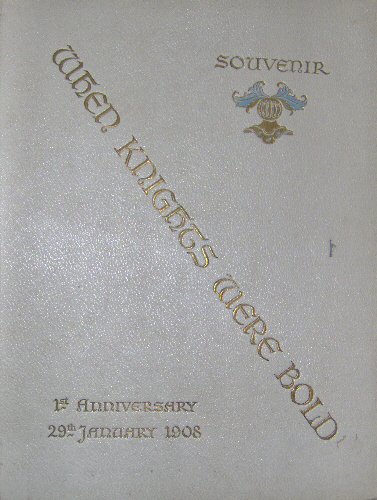 |
|
Wyndham’s Theatre, First Anniversary Souvenir |
|
|
|
||||||||||||||||||||||||||||||||||||||||||||||||||||||||||||||||||||||||||||||||||||||||||||||||||||||||||||||||||||||||||||||||||||||||||||||||||||||||||||||||||||||||||||||||||||||||||||||||||||||||||||||||||||||||||||||||||||||||||||||||||||||||||||||||||||||||||||||||||||||||||||||||||||||||||||||||||||||||||||||||||||||||||||||||||||||||||||||||||||||||||||||||||||||||||||||||||||||||||||||||||||||||||||||||||||||||
|
When Knights Were Bold (written by ‘Charles Marlowe’) received its first performance at the Theatre Royal, Nottingham on Monday, September 17, 1906. Its London premiere was at Wyndham’s Theatre on 29th. January 1907, where it ran for 579 performances. It continued to be revived in London for the next 30 years as well as being produced around the world, in Europe (including Russia), America and Australia. It was filmed four times and there was a short- lived musical version produced in 1943. It continued to be produced by provincial theatres and amateur companies until the 1950s. It was Harriett Jay’s greatest popular success and, learning her lesson from Alone in London, she retained the rights to the play until her death (it is the only work which is mentioned by name in her will). The most ironic thing about the play is the fact that it was also Robert Buchanan’s greatest success, although his name never appeared on any playbill for When Knights Were Bold. _____ 1. The Origin of When Knights Were Bold i. Pillicoddy 2. Reviews 1: 1904 - July 1907 3. Reviews 2: August 1907 - 1909 6. When Knights Were Bold in The Play Pictorial No.55 7. The Films 8. The Musical 9. Miscellanea i. Obituaries of three famous Guy de Veres: ii. Jay v. Welch - When Knights Were Bold in Court iii. Die goldene Ritterzeit - the book iv. Odd items from the internet |
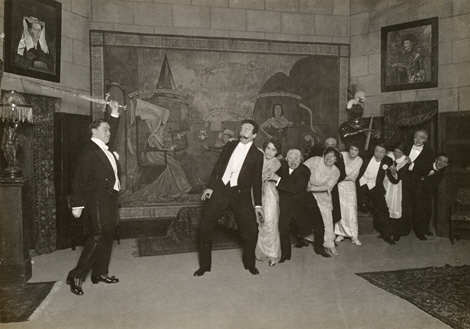 |
|
[From the 1915 Dutch production of De gulden riddertijd.] |
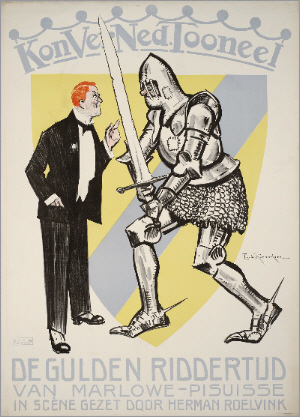 |
|
[Click the picture for a larger version of the poster.] _____
Next: Robert Buchanan’s Short Plays Back to the Bibliography or the Plays or Harriett Jay Theatre Reviews
|
|
|
|
|
|
|
